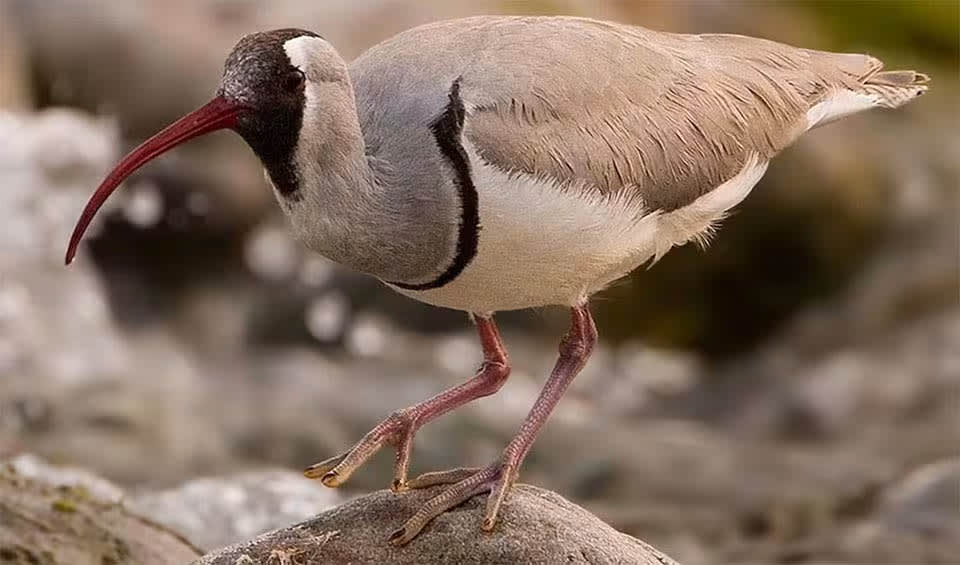Ibidorhyncha – Ibisbill
Owner of one of the most peculiar-looking beak shapes in all of the bird kingdom
A very rare wader of Asia’s flat rocky rivers.
With a geographic range that spans the rocky, flat riverbeds of the Himalayas and nearby mountain ranges, the Ibisbill occupies a niche habitat at elevations ranging from a moderate 500 meters to an impressive 4,000 meters above sea level. These altitudes offer the cool, oxygen-rich environments and the clear, unpolluted waters that Ibisbills require.
During the breeding season, Ibisbills can be found along the banks or gravelly islands of slow-flowing rivers, where they lay their eggs among the pebbles, camouflaging them against predators. The choice of such a habitat for nesting is driven by the bird’s need for a specific environment that provides both protection for its young and a reliable food source. The breeding sites are typically isolated, which reduces the risk of predation and human disturbance.
As winter approaches and the high-altitude temperatures drop, Ibisbills descend to lower elevations, although they never stray far from the riverine habitats they favor. These seasonal movements are not long-distance migrations but rather altitudinal shifts that allow the birds to avoid the harshest winter conditions while still accessing their preferred food sources.
The Ibisbill’s diet is rich and varied, reflecting the biodiversity of the river ecosystems it inhabits. It includes a variety of insects and their larvae, crustaceans, and small fish. The latter becomes a more prominent part of their diet during winter when the birds are at lower elevations, and the rivers may offer a greater abundance of fish. The Ibisbill’s beak is a remarkable evolutionary adaptation, allowing it to employ different foraging techniques. It can probe the soft mud, peck at the surface, or precisely rake through the pebbles to unearth its prey.
Species in this genus
Ibisbill
Owner of one of the most peculiar-looking beak shapes in all of the bird kingdom

